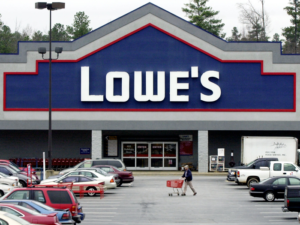
An MVP or Minimum Viable Product has the most basic features that users need and want. The goal of this product is to test out different aspects of your market, such as what people like and don’t like about it.
MVP is a term that has been widely used in the software development space. It stands for Minimum Viable Product, and it refers to a basic version of your product that you release to see how people will react. The idea behind this approach is simple – if nobody seems interested in what you have made, then there’s no point in investing more time and money into developing it. On the other hand, if people seem excited about what they see, you can make it better before releasing the final product.
Let’s look at some of the key points you should consider before building an MVP for your project.
The first thing to keep in mind is what kind of users will be interested in it? You need to know who would use this product and how they may benefit from using it. For example, a taxi app needs people looking for a ride and drivers willing to provide transportation services. Once you understand these basic things, then read on!
Jump Ahead To :
What Is An MVP?

Minimum viable product is a development technique in which software programs are created with only the necessary features to help determine what needs to be added. MVP also allows businesses an early chance at testing the market potential of their ideas while minimizing financial risk on experimentation.
The Minimum Viable Product is a strategy that encourages businesses to release projects as early as possible and then improve them over time by soliciting feedback from the public. This method allows for testing products in a real market environment much sooner than traditional product development cycles would allow.
MVP In Software Development Explained

MVP stands for a minimum viable product. The MVP is one of the first things that come to mind when people figure out their startup or business.
Most people think of MVP as a marketing term, but developers can also build their apps. MVP stands for Minimal Viable Product and is the most minimal version of your product that you need to put out there. You are not trying to make something perfect or great right away – you are just aiming at the first step in the process, so more people know about what you’re doing!
The idea behind an MVP in software development is that you can get a version of your product into customers hands and then quickly iterate based on their feedback. This allows developers and designers alike to work harder on making sure they’re building something their users want instead of spending months, even years working on something only to find out nobody wants it once it’s released.
For most businesses, this means creating a so-called “least marketable feature” set – usually just enough functionality with which some potential clients would use the service/product. The key here is that the company needs to get their product in front of customers and see how they use it, rather than trying to guess what those users need based on assumptions about them or the market as a whole.
MVPs are one approach for doing this; another way is by creating an alpha version which can then be used as part of your marketing campaign (e.g., “download our new app – we’d love to hear feedback!”).
The first iteration may not have everything you want it to, but having something out there will allow you to test your idea with potential clients sooner and make changes before investing too much time building features no one wants (or ever). MVPs are not just for software development companies either – they can be used in almost any business, allowing you to quickly get your product out the door and rapidly iterate based on real-world feedback.
MVPs allow startups or small businesses to make changes faster while spending less money developing features no one wants. This means more time spent creating things people do like – which should help improve sales numbers down the road.
Purpose Of An MVP
An MVP is a term that has gained immense popularity over the past few years. Many companies are using this strategy to rapidly develop and launch new products or services with a minimal upfront cost, time, effort and risk on their part. The idea of an MVP first came about in 1999, but it wasn’t until around 2008, when Eric Ries mentioned it for the first time at his blog Startup Lessons Learned, that people started talking about it more often. An MVP plays multiple roles, as discussed below:
- Minimal Viable Product – A product that includes only those features/functions necessary to satisfy early customers so they can validate whether your solution addresses their needs effectively. This helps you avoid building out unnecessary feature sets or functionalities before actually understanding what users want and, in turn, help you save a lot of time and money. MVP also enables you to understand the problems that users face, what drives them to use your product or service?
- Minimal Marketable Product – An MVP is often used as a marketing tool by companies to generate customers’ interest before actually building it out completely. This allows entrepreneurs to pitch investors something tangible rather than just an idea they are trying to get off the ground. Suppose someone can see your MVP working well. In that case, this will improve your chances of attracting funding/investors significantly because potential backers would be more confident about investing if they have proof that people love using it. Also, generating feedback from early adopters willing to pay real money is a great way to show you are onto something decent.
- Minimal Viable Vision – An MVP helps founders convey their vision effectively by building out the product or service in stages. Users get on board at each stage of development and give feedback which enables entrepreneurs to pivot if required. This saves time, money and resources for new companies who do not want to go through multiple iterations of developing an idea before arriving at what consumers want.
- Minimum Viable Engagement – MVP’s are also used to test the stickiness and engagement of a product. This helps entrepreneurs know what motivates users, where they get stuck etc., which allows for further iterations in future stages of development.
What famous companies used MVP’s successfully before launching their product/service out into the market for mass consumption?
- Dropbox launched an MVP called Mailbox, which allowed users signups, use a basic version of its service, and test how it performed. This was done around March 2013 when no other players were offering similar functionality. They eventually acquired more than half a million customers within just 18 days!
- Instagram – The founders created Burbn (a location-based checking app as an MVP after first releasing it to a select group of users. They then pivoted the product and re-released it as Instagram, which was initially restricted to iPhone (iOS only) based customers in 2010, before eventually becoming available on Android too!
- Facebook acquired Instagram in April 2012 for $101 million (just two years since the initial launch)
- Zappos – The Company started by selling shoes which were delivered within just four hours. This process helped them understand customer preferences and logistics much better before building out a full eCommerce platform.
How Can You Build An MVP?

There are several ways that entrepreneurs go about developing their MVP’s depending on what stage of product development they are at:
Build it Yourself
This is done when your idea requires minimal outside help/assistance from other companies or individuals, i.e. if all the technology needed already exists so it does not require any external integration, etc.; this might be worth considering. If you are a developer or have an in-house development team, this is the route to go down.
DIY MVP Agencies
For those who do not want to deal with any of the hassle involved but still require assistance building their product, some agencies help conduct all sorts of research and testing on your behalf. You can find such companies by searching for “MVP” on Google (and other search engines). The associated costs will vary depending upon what services you need from them and how complex your idea/product may be, i.e. if it requires extensive customization etc.
Freelancers
Similar process goes into finding an agency; however, hiring freelancers enables entrepreneurs more flexibility than going down the agency route. You can find freelancers by using sites like Elance (which connects you to potential candidates), or if your company is based in the US, try posting on our subreddit’s “for hire” section!
Advantages Of Building An MVP
MVPs are inexpensive for their purpose. The MVP development process is the cheapest way to get an idea in front of customers and see if it has legs or not before you invest a ton of money into creating your product.
In addition, MVP helps get your product in the hands of users faster, allowing immediate feedback. This is key because having real-time information about how well a specific feature or part of your product works can save time and money for making changes. By building an MVP, you learn more about what buyers want in just weeks rather than months, if not years!
MVP development also encourages leaner business models by minimizing risk until sufficient data is collected from early adopters. An example would be delaying the addition of unnecessary bells and whistles so as not to increase cost without adding value before getting customer validation on their needs first.
It’s also good because there isn’t much up-front investment which means that risk is reduced. If it fails, you haven’t invested too much time, effort or money into developing anything other than just an MVP concept. This makes launching MVPs very attractive to entrepreneurs who want to learn about their market without spending any real cash on research and development (R&D).
Ways Of Building An MVP

To create a minimal viable product, startup founders need to apply the right strategies. Some of these include:
- The first strategy is creating a prototype or mock-up for your MVP. It would be best if you had something that has been made before you jump into developing an actual MVP, so it’s easier and faster to put together once you get started on development. Once this initial design phase is complete, then move on to building out your MVP.
- Also, startups can build an MVP by using existing products from other companies instead of building their own from scratch. If there are apps available that do what you’re looking for, try either integrating those services with yours or asking permission if they allow third-party integration.
- If you’re a startup that already has some form of users, then consider using them as your testers to ensure all the bugs have been fixed and everything is functioning properly before releasing it to the public. This way, there will be less criticism from outside sources once it’s released into cyberspace which can boost business growth if done correctly.
- Another strategy for creating an MVP would be by asking customers what they want in advance, so you don’t waste time developing features no one uses. And also, wants back end tools people won’t operate on their own because those are considered useless expenses not only to yourself but investors as well should they put money into your project. Reach out to early adopters and ask them what exactly do they need within this product to either give you the go-ahead to build it or tell you they’ll use it if certain features are added.
- Another MVP strategy would be by building upon what people already know and love so that your product can compete with others in its field who have similar services or products. If there’s something already out on a similar market, consider how yours will stand out among users once released into cyberspace for purchase online or through brick & mortar retailers, depending on what kind of business this entails. Make sure whatever feature makes yours different from competitors is included within your app since reasons are more likely to buy a product when they see value instead of just another copycat designed after them without anything new being introduced.
The final strategy for building an MVP is to do it quickly. This can be achieved by starting with the most important features first and working your way down from there, which means you’ll always have something new instead of having a long list that will never get checked off since things are constantly changing within technology, especially on the web. Hence, if anything isn’t working properly, fix it as soon as possible before moving onto another feature or implementing even more updates.
In Conclusion
At this point, taking that step to building your MVP ought not to be as scary. Keep in mind; it doesn’t need to be awesome! Follow the right techniques to fabricate an MVP for your product.
Note, MVP is a methodology that enables new businesses to find a ton about their clients with the assistance of a functioning item without overspending important time and assets. Everything necessary is to design business speculation, recognize the principle MVP highlights, know your target group and collaborate with the right MVP Development organization.






